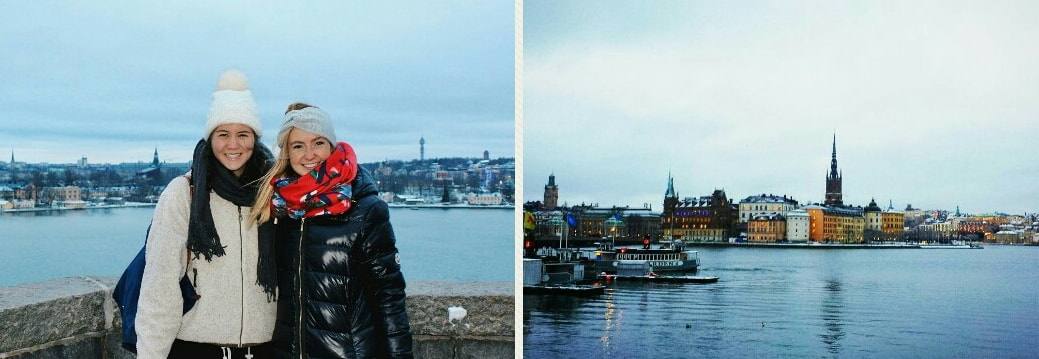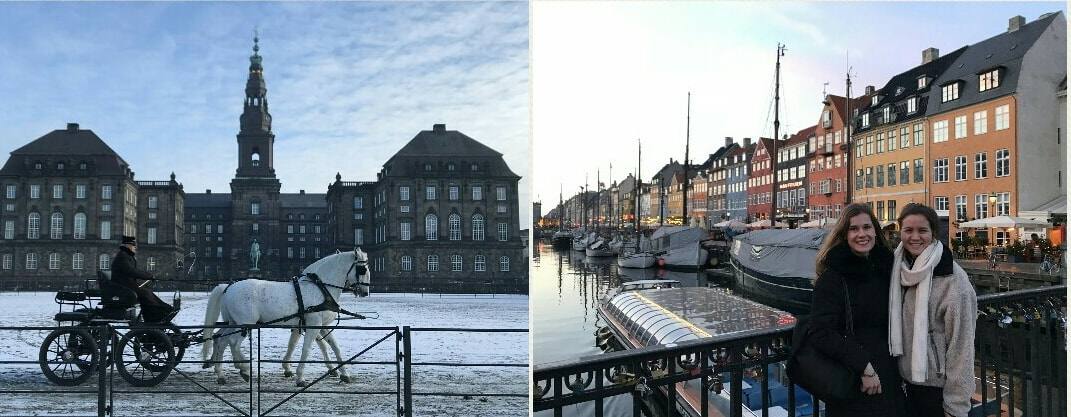Hello from a snowy day in London!
I’ve recently celebrated Chinese New Year in London and am coming off a big birthday celebration with friends (year 22, here I come!). In this post, I’ll discuss the role of comparative advantage in industrial policy end with highlights of my trips to Stockholm and to Copenhagen!
Industrial Policy: The Decline of Comparative Advantage
Industrial policy is prominent on development practitioners’ agendas and a key debate hinges on whether government strategies should conform to or defy comparative advantage. I argue that the theory of comparative advantage is less compelling in the current era of globalization. Historical precedence, technological advances, and international competition reveal the shortcomings of comparative advantage in low-value production.
1. Historical Precedence
Successful early and late developers had high degree of government support for industrialization and defied their natural endowments of labor or agriculture. Two examples of early developers, Great Britain and the United States, used government policy in capital accumulation, infrastructure development and trade protection to promote new industries. Starting in 1721, Britain shifted its industrial and trade policies to focus on promoting manufacturing industries. Britain maintained high protection after the industrial revolution, with tariffs on manufactured imports reaching 50% in 1820 (Birch 1993). The United States used government intervention in foreign trade and in the domestic economy. Tariffs grew from a 5% flat rate tariff on all imports in 1789 to an average 40% tariff rate on average manufactured goods during 1832 (Shaefeddin 1998). Between 1816 and 1945, the United States had one of the highest average tariff rates on manufacturing imports in the world (Chang 2003).
The East Asian examples of late developers also adopted more aggressive, dirigistic industrial policies to create new comparative advantages. Governments promoted capital accumulation, provided protection to enhance innovation and international competitiveness, and regulated quantities and prices in important industries. With help from comparative-advantage-defying industrial policy, Korea, with almost no capital after the Korean war, was able to defy its natural endowments and successfully produce exports in capital-intensive industries such as steel (Porter 2011).
2. Changing Global Landscape: Tech and GVCs
There is also theoretical justification for defying natural comparative advantage. Technology and globalization create structural barriers to growth that prevent developing countries from diversifying their economies organically. Specializing in low-value production limits opportunity for income growth.
Because technological innovation relies on highly skilled labor markets which can adjust to and implement new technology, these advanced activities concentrate in developed countries (Bartel and Lichtenbert 1987). Less educated workforces in developing countries are relegated to lower-value, less-elastically-demanded sectors while developed countries produce goods that command a high demand elasticity. Low-value specialization can restrict income growth because demand for these less-advanced products remains at a similar level even as world incomes grow. This implies that, due to the content of their exports, developed countries can accumulate wealth at a faster rate and the gap between developed and developing countries will rise. This gap further consolidates developing countries’ position in low-value activities and can be reflected in standards of living. Low-value specialization also decreases the possibility for dynamic economic growth that would arise from inter-sectoral economic linkages from advanced industrial activities (Chang 2016).
In addition to technological advances, another hindrance to income growth is the rise of global value chains and fragmented production. Because the production process is broken up, producers of the advanced stages of production have more power to withhold rents and control mobility up the value chain. Concentrated rent, governance and systemic efficiency give more power to the final producer and can lead to immiserating growth of increasing economic activity but falling economic returns (Kaplinsky 2000). Though some academics argue that technology transfer and FDI to developing countries can allow them to naturally transform their economies, power dynamics in GVCs and international competition dampen this effect (Saure 2007, Chang 2016).
3. Competition and Power Structures
Continuing with the theoretical argument, the comparative advantage theory of competition underscores the potential negative impact of interconnected global markets on developing countries. Because all firms want superior financial performance, competitors will attempt to neutralize rivals’ comparative advantages through acquisition of the same resource, imitation, substitution, or major innovation (Hunt 1995). Nations wielding absolute advantage can limit less developed countries from exporting in global markets or moving into more advanced industries.
First, exposure to international competition necessitates the absolute productivity standard to compete against foreign counterparts. The increase of multinational corporations and foreign subsidiaries weakens the traditional explanation for why and to where nations export. Without an absolute advantage, countries are unable to export and have limited prospects for productivity growth (Porter 2011).
Second, absolute advantage contributes to a countries’ power and influence which can be used to further national interests. For example, developed countries have created a multilateral order through the WTO which protect their comparative advantage in technology-intensive sectors (Weiss 2005). Developed countries also exhibit their power informally through use of strong bargaining leverage.
Caveat: The Potential Costs of Comparative-Advantage-Defying Industrial Policy
Despite evidence that developing countries could benefit from comparative-advantage defying industrial policy, potential costs of these policies serve as a deterrent. The failure of ISI in Latin America proved that countries who industrialize too quickly, aiming too ambitiously given limited capital and human resources and narrow markets, might not achieve high levels of growth (Baer 1972). Governments are not omniscient, are unable to “pick winners,” and government failures from second-best industrial policies might be worse than market failures (Krueger 1997, Lal 1985). Infant industry protection fosters rent-seeking and protects non-viable industries (Baldwin 1969, Krugman 2015).
The limits of government knowledge and other political considerations increase potential costs of active comparative-advantage-defying industrial policy. Though comparative advantage should not constrain industrial policy, it is still a useful guide for determining possible gains and risks (Chang 2016).
Stockholm, Sweden
During my stay in Stockholm, I loved spending time in Gamla Stan (the old city) and enjoying Swedish pastries! My friend Ellie joined me from Poland, and together we embraced the freezing temperatures and explored the city.
The first day, I visited the Nobel museum and learned about Alfred Nobel’s cosmopolitan upbringing and life in science. The following days I took 2 free tours in Stockholm, learning about the history of the main and old cities. I learned about modern culture of “fika” and “lattedaddies” and the Swedish welfare system, and also learned about old history of the Kings Gustav and Danish-Swedish relationship. And of course, being in the birthplace of ABBA, Ellie and I had to visit their token museum!
On my final day, I traveled to Uppsala and visited the church where Swedish kings used to be crowned. I spent the latter half of the day in Sodermalm, visiting the fotografiska museum and watching the sun set over the city.
These few days gave me a good taste for the city, and I look forward to returning one summer in the future!

Copenhagen, Denmark
The next weekend my friend Anna and I headed to the exciting land of Danish pastries, Legos and Vikings!
We first traveled north to visit the Kronberg castle – the Renaissance capital and setting of Shakespeare’s Hamlet! We then traveled to the Louisiana Museum of Contemporary Art and visited a large Picasso sculpture exhibit. Anna and I sampled the Danish speciality of marinated herring (quite an invigorating experience). I also took a free city tour which ended in “Christiania,” the self-proclaimed, autonomous region of Denmark and visited the Carlsberg museum. My last night ended with meeting local Danish girls at the local pub and learning about their political views and discussing cultural differences. Quite an educational and cold trip, and I was quite excited to return back to the warmth (lol) of London!

Cheers!


